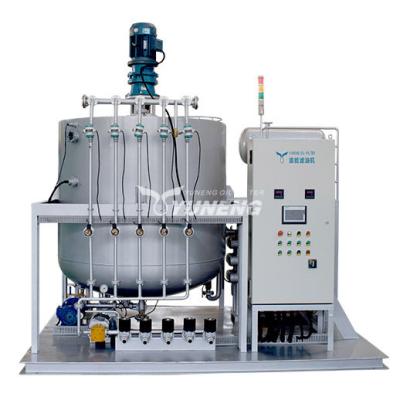Categories
Tags
-
#Portable Oil Purification
#6000LPH Transformer Oil Purifiers
#Mobile Dry Air Compressor
#Transformer Vacuum Pumping
#Vacuum Pumping Systems
#Single Stage Transformer Oil Purification Plants
#Transformer Oil Regeneration Machine
#Transformer Oil Dehydration Machines
#Lube Oil Purifiers
#Transformer Oil Degassing
#Two-Stage Vacuum Pumps with Roots Pump
#Transformer Oil Filtration
#Hydraulic Oil Purifier
Archives
The Role of Oil Blending Machines in Enhancing Lubricant Qualit
-
The lubricant industry relies heavily on precision and consistency to produce high-quality oils for automotive, industrial, and marine applications. One of the most critical processes in lubricant manufacturing is oil blending, where base oils and additives are mixed to achieve desired viscosity, performance, and protection properties. Oil blending machines play a pivotal role in ensuring uniformity, efficiency, and quality in this process.
Why Oil Blending Machines Are Essential
Blending oils manually or with rudimentary equipment can lead to inconsistencies, affecting the final product's performance. Oil blending machines automate the process, ensuring:
Precise Mixing Ratios – Advanced blending machines use programmable logic controllers (PLCs) to maintain exact proportions of base oils and additives.
Homogeneity – High-shear mixing and recirculation systems prevent separation and ensure a uniform blend.
Efficiency & Cost Savings – Automated blending reduces labor costs and minimizes waste by optimizing raw material usage.
Quality Control – In-line sensors monitor viscosity, density, and other parameters to maintain product consistency.
Types of Oil Blending Machines
Different lubricant formulations require specific blending techniques. Common types of oil blending machines include:
Batch Blenders – Ideal for small to medium-scale production, allowing customized blends in controlled batches.
Inline Blenders – Used for continuous blending in large-scale operations, ensuring rapid and consistent mixing.
Static Mixers – Employ motionless mixing elements for low-viscosity oils with minimal energy consumption.
Applications in the Lubricant Industry
Oil blending machines are used to produce:
Engine Oils – Blending base stocks with detergents, anti-wear agents, and viscosity modifiers.
Industrial Lubricants – Creating hydraulic, gear, and compressor oils with specific thermal and oxidative stability.
Marine & Aviation Oils – Meeting stringent industry standards for high-performance applications.
Conclusion
Oil blending machines are indispensable in modern lubricant manufacturing, ensuring high-quality, consistent, and efficient production. By leveraging automation and precision technology, manufacturers can meet industry demands while reducing operational costs.
